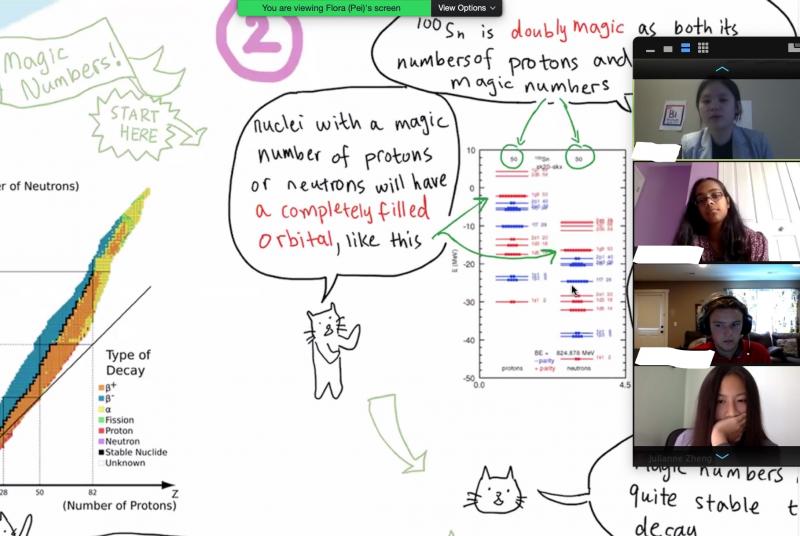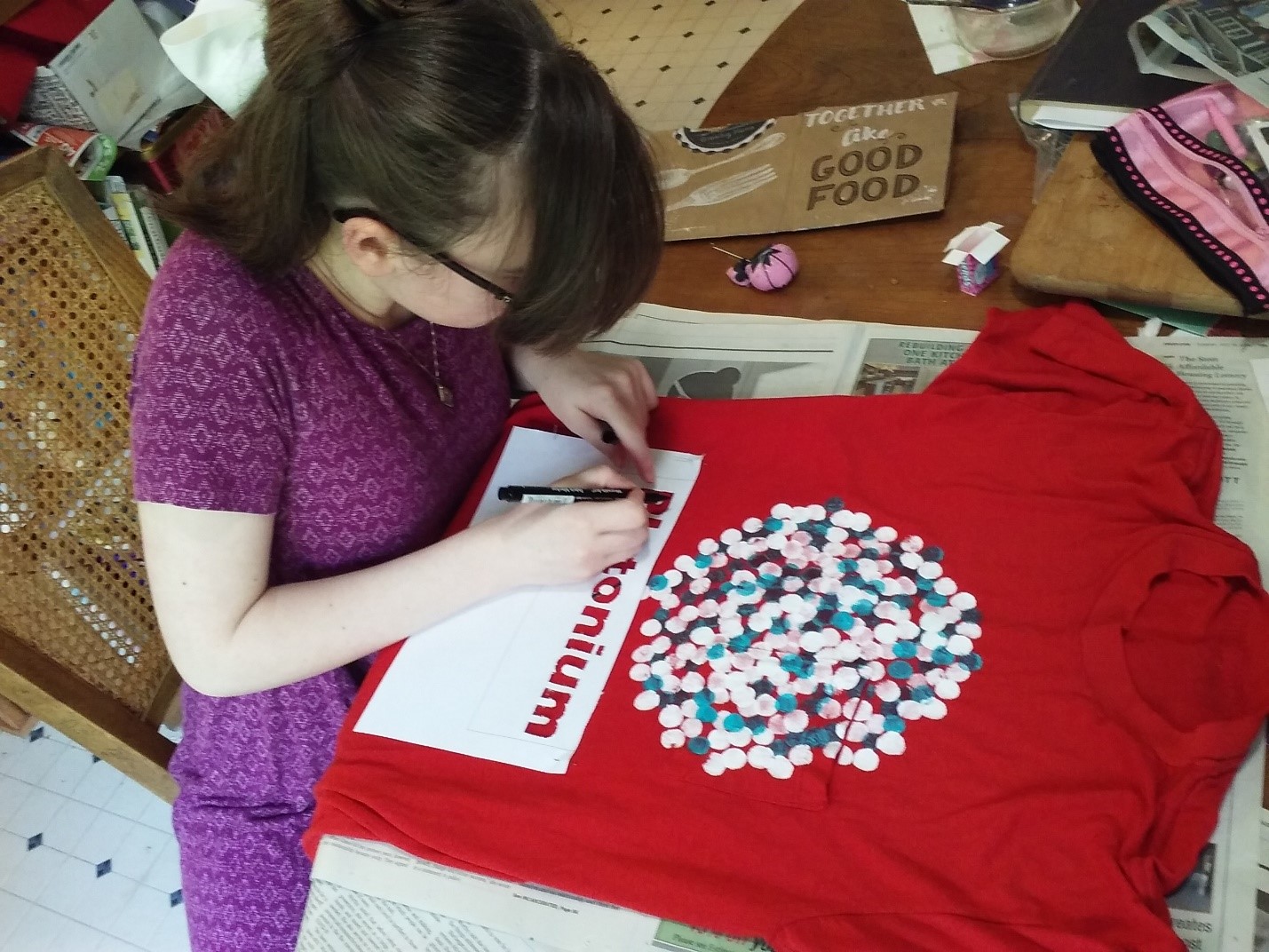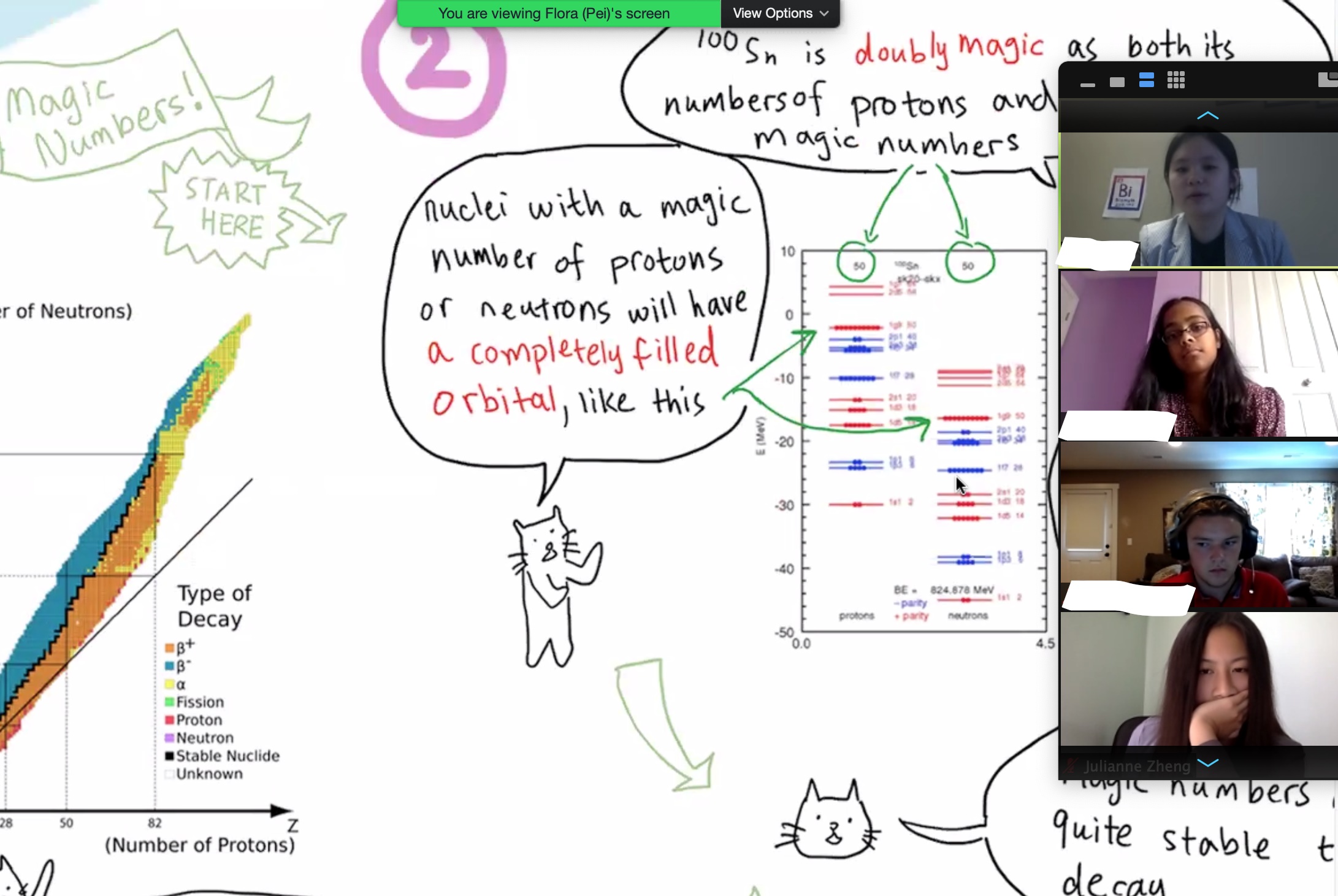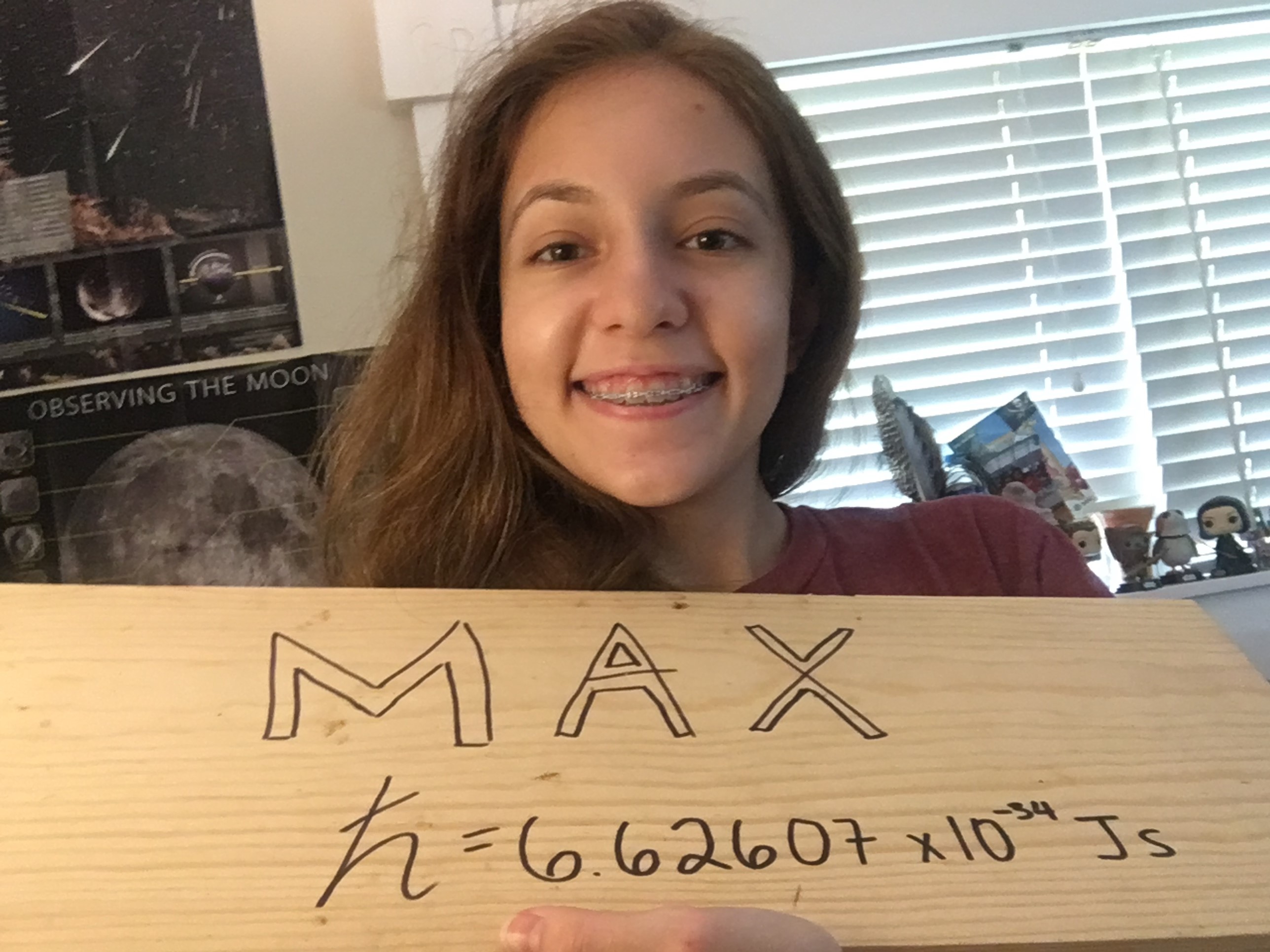Data
You will be redirected to cenamweb.org in 15 second(s). The JINA-CEE website is not updated anymore. The archived website can still be reached through the CeNAM website.
Physics of Atomic Nuclei (PAN) goes online

The 27th edition of the Physics of Atomic Nuclei (PAN) summer camp took place online during the week of July 27-31, 2020. This is JINA-CEE's longest running outreach program, and in its first socially-distanced edition, it was a total success!
Much about this program was familiar: highly-motivated high school students from around the country, presentations by JINA-CEE researchers, and time in smaller research teams. However, this year marked the first PAN conducted online due to social distancing requirements. It turned out that the JINA-CEE multi-institutional and multi-disciplinary research network was ideally positioned to address this challenge. Led by Zach Constan from Michigan State University, PAN 2020 became a broad collaboration of 10 JINA-CEE institutions including Central Michigan University, Colorado School of Mines, Gonzaga University, Missouri A&T, Michigan State University, Ohio University, Rutgers University, University of Notre Dame, University of Victoria (Canada), and University of Wisconsin.

JINA partners worked together to create innovative research activities that replaced the usual hands-on laboratory experience, and were carried out by students in small groups supported by JINA-CEE mentors:
- Groups at Michigan State University and University of Victoria leveraged the Astrohub environment created at the University of Victoria to enable collaborative research in JINA-CEE, IReNA and other networks. The collaboration developed an Astrohub project where students could explore cutting edge computer simulations of element synthesis in stars and propose experiments for the future FRIB accelerator facility.
- The group at Notre Dame circumvented the distance barrier by setting up a physical spectroscopy station and allowing the students to “access” it by giving instructions over video chat to the researcher on-site. Teams were challenged to determine the elemental composition of an unknown gas and/or stellar sources by carefully measuring their spectra.
- A nuclear Energy-Density-Functional Theory project invited students to run modelling code on their own laptops, selecting an isotope of interest to generate the energies and quantum numbers associated with the motion of one proton or neutron in the presence of other nucleons. Resulting level schemes and emergent patterns allowed them to discover the driplines, magic numbers, the valley of beta stability, and much more.
- Recent scattering experiments at NSCL informed the fourth research project, where students calculated the probability of Rutherford scattering in a given collision. They first estimated and then measured the number of atoms in a very thin metal foil that was used in that recent experiment, then used scattering data to look for elemental impurities in the foil.
The absence of logistics requirements such as housing and space for activities also meant that the program was able to host more students at once: 36 compared to the usual 24, hailing from 17 different states. Student teams chose one of the projects to pursue throughout the week, working alongside a JINA-CEE mentor and overseen by the faculty who developed the project. Friday saw the culmination of those projects in the poster/presentation session where each group communicated their results.
While there was understandably less social interaction among the students and with JINA-CEE researchers, post-surveys revealed the most important result: that PAN Online had a very similar impact as the in-person programs of previous years. Students commonly expressed these lessons learned:
- Research isn’t “just for adults with a four-year degree”
- Collaboration is critical to research at the frontier
- For those who hadn’t considered physics and/or nuclear astrophysics for their college major and/or career, PAN increased their interest in that path
- For those who were previously interested in a physics career, PAN further inspired them to pursue their dream

Overall, PAN Online proved extremely successful! In the words of one student:
“A lot of speakers' answers to our questions have shown me that they, in fact, do not have the answers to a lot of our questions; the scientists of our generation will be the ones to answer them. I didn't really understand the enormity of that, and there is still so much unanswered, and it takes a research community to find those answers. Soon, I will be a part of that research community; I will be doing the research to find those answers, and PAN has really shown me how important that is.”
We wish to recognize the work and dedication of all the volunteer scientists who made PAN Online possible. Thank you!
Organizers: Zach Constan (MSU) and Robby McKay (MSU).
Project designers: Alex Brown (MSU), Kaitlin Cook (MSU), Michael Kilburn (Notre Dame), Hendrik Schatz (MSU)
Lecturers: Ana Becerril (MSU), Alfredo Estrade (CMU), Shelly Lesher (U Wisconsin - Lacrosse), Zach Meisel (Ohio U), Vini Placco (Notre Dame).
Mentors: Thomas Chuna (MSU), Stefania Dede (Notre Dame), Adam Fritsch (Gonzaga), Heather Garland (Rutgers), Lauren Hicks (MSU), Rahul Jain MSU), Michael Kilburn (Notre Dame), Aaron Magilligan (MSU), Andrea Richard (MSU), Mallory Smith (MSU), Shiv Subedi (Ohio U), McKenna Wallace (Notre Dame).
Evening "Ask Me Anything" Undergraduate Students: Joseph Chung (MSU), Zach Driemeier (Missouri A&T), Alec Gonzalez (Notre Dame), Danielle Hamilton (MSU), Meghan Kinnischtzke (Colorado School of Mines), Pranav Nalamwar (MSU), Michael Quintieri (MSU), Nicole Venboncoeur (MSU), Lexie Weghorn (U of Wisconsin).


More details on the “hands-off” experiments completed at PAN Online:
- Nucleosynthesis: computer modelling code allowed students to predict the elements that are created in different astrophysical scenarios, and then tweak the reaction rates to identify some of the important nuclear reactions that are responsible. This was made possible though a collaboration with the Astrohub online virtual research environment (https://astrohub.uvic.ca), developed and operated by the Computational Stellar Astrophysics group (http://csa.phys.uvic.ca) at the University of Victoria and hosted on the Computed Canada Arbutus Cloud at the University of Victoria.
- Spectroscopy: students learned spectroscopy techniques by observing the emission line spectra of several elements in gas tubes. While their mentor was physically operating the equipment, the student teams collected data as if they were in the room. Once their skills were calibrated, teams were challenged to determine the elemental composition of an unknown gas and/or stellar sources by carefully measuring their spectra.
- Creating the Isotopes: using modeling code they could run on their own laptops, students could select any isotope and generate the energies and quantum numbers associated with the motion of one proton or neutron in the presence of all other nucleons in that nucleus. The resulting level schemes and emergent patterns helped them understand stability, magic numbers, beta decay, the location of the proton and neutron drip lines, and the nuclear "spin". All of these are important for understanding the role that each isotope plays in astrophysics.
- Rutherford Scattering: students calculated the probability of Rutherford scattering in a given collision, recalling the earliest nuclear experiments. They first calculated and then measured the number of atoms in a very thin metal foil that was used for a recent experiment, and also used Rutherford scattering to look for elemental impurities in the foil. Students reproduced the method used to confirm that the nuclei of atoms were far smaller than the atom itself, and explored how scattering first revealed the elemental composition of moon rocks.
